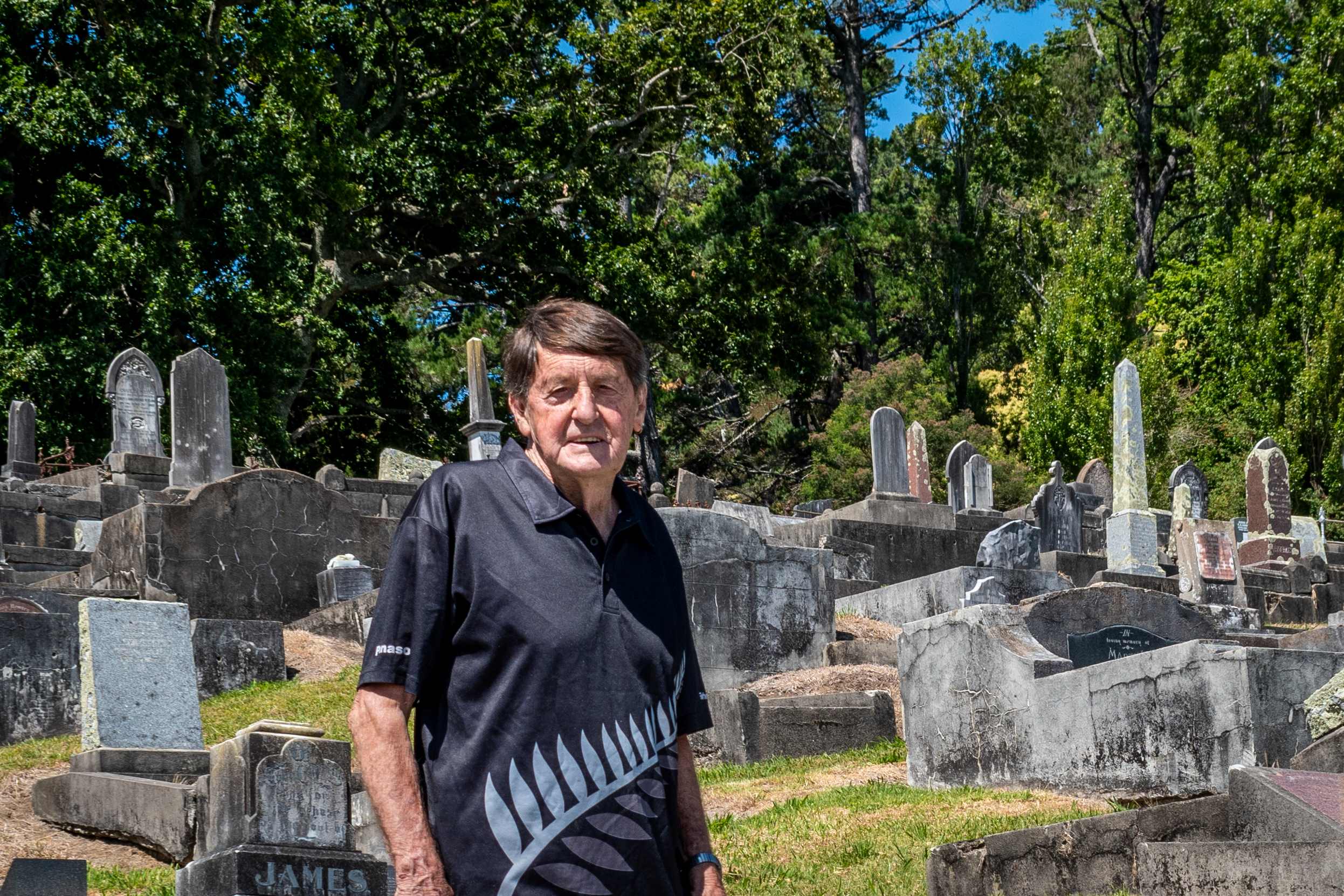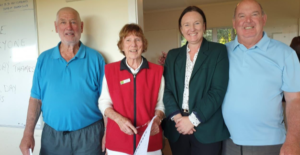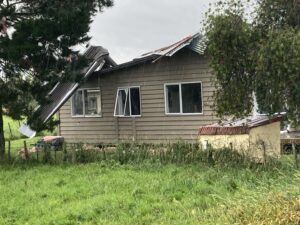For a quarter of a century, King’s Service Medal recipient Graeme Pearce has been tending to Thames’ historic final resting places.
At least twice a week the volunteer caretaker can be found among the crumbling walls and overgrown headstones of Shortland Cemetery, Tararu Cemetery or the urupā at Pārāwai. And while he tackles the never-ending job of weed clearing, grave cleaning and general tidying up, he collects the stories of the departed.
Graeme’s interest in the cemeteries began when he was cleaning a grave belonging to his wife’s relatives, and ran into acquaintance Kevin Small. Kevin took him up the hill to the overgrown upper section of Shortland Cemetery.
“He’d found a grave there where a headstone had fallen over, so he straightened it up, and it was a little grave of a 16-year-old girl, so he decided he would tidy it up,” Graeme said.
“I said, ‘that’s a bit of a mess, isn’t it?’ He said, ‘yeah, I’m going to try and do a bit’, and I said, ‘okay, that’s what we’ll do’.”

For the first several years, he would tote his tools up the slopes and clear what he could, funding the work himself. The sites, closed to new burials, only receive limited council maintenance.
In 2017, Thames-Coromandel District Council took him on as a “council volunteer”, which meant he could receive assistance for things like petrol and line for his weed-eater.
“Things changed and all this health and safety came out, so all of a sudden I became a liability and nobody wanted to know about me,” Graeme said.
“In the back of my mind was, don’t try and tell me I can’t go up there because I am a stubborn old bugger sometimes. Pig-headed, you might say. So anyway, they came to a compromise.”
Over the years, Graeme has become known as the go-to person for gravesite information. Many of Thames’ historians have sought his help over the years to find and photograph the sites, and his findings are uploaded on the Find A Grave website.
“I’ve always liked reading about things in history,” he said.
“[And] I’ve got all the maps of the cemeteries. I’ve got all the information.”
Graeme’s also quite used to getting the odd knock on his door from people looking for their loved ones. It can be quite emotional, he says, when they find what they’re looking for.
“I’ll take people up there… One was right up the back to the grave that Kevin first found, the 16-year-old girl,” he said.
“I took this lady and her brother up there and [she’s] taking photos. I said, ‘do you realise there’s someone else in there?’ I read off the name that I had on a bit of paper, and she burst out crying. And she hugged her brother and I thought, what the hell’s going on? And [she] was the mother, and she had no idea where the girl was buried.”
Just as rewarding, Graeme says, is when people return and start tending to the grave themselves.
“They come back and they love it – it’s one of the greatest things since sliced bread.”
These days, Graeme has slowed down a little. He’s had a year off for health reasons, and is easing back into it. While it’s been discouraging to see the regrowth of weeds in his absence, he’s determined to keep going as long as possible.
“I’ve got two artificial hips and an artificial knee, so my balance isn’t 100 per cent. I don’t do any fancy footwork,” he said.
“I’m down to about two and a half, three hours now. That’s all the body can take.”





